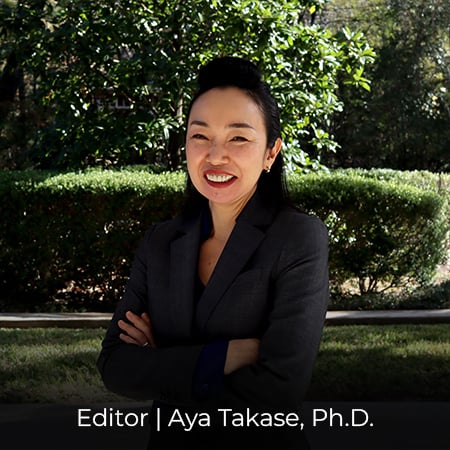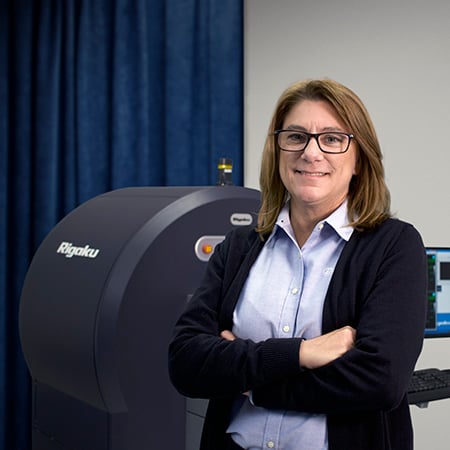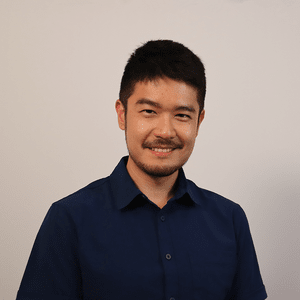Mastering CT: Advanced Techniques in Practice
1. High-attenuation Sample Imaging with X-ray Computed Tomography

This is a written summary of a live webinar presented on August 20, 2025. The recording and resources are available on the recording page.
Presented by:
Webinar summary
The webinar, the first in the series Mastering CT: Advanced Techniques in Practice, provided a deep dive into challenges and practical solutions for CT users dealing with dense or large samples that attenuate X-rays heavily. The session began with a refresher on the basic principles of X-ray CT: capturing multiple 2D projections as an object rotates, then reconstructing them into a 3D digital twin using computer algorithms. However, Ted moved beyond the basics, emphasizing that while CT seems straightforward in theory, real-world applications—especially with high-attenuation samples—can be far from simple.
High-attenuation samples, such as metals, concrete, bone, and large dense objects, pose three primary problems: low contrast, artifacts (particularly metal and beam hardening), and sample mounting difficulties. Ted explained that contrast in X-ray imaging stems from differential attenuation; when materials absorb X-rays similarly, distinguishing internal structures becomes difficult. This is common in dense metals, where the image may reveal only silhouettes, not internal features. Metal artifacts, like streaks and false structures, arise when dense materials distort X-ray paths or scatter radiation, misleading the detectors. Beam hardening, meanwhile, causes the edges of dense objects to appear unnaturally bright due to lower-energy photons being absorbed more readily, creating a cupping effect that can obscure actual structure. Mounting issues, though perhaps unintuitive, were shown to be just as impactful; improperly oriented samples can exacerbate artifacts or reduce image quality significantly, even if all other scan parameters are ideal.
To combat these issues, Ted discussed a methodical optimization process, using a sintered steel and copper sample as an illustrative example. First, increasing the X-ray tube voltage from 130 to 200 kV improved photon penetration, boosting contrast. However, this alone didn’t eliminate artifacts. Introducing physical filters, such as copper or tin plates, removed low-energy photons from the beam, further improving contrast and reducing beam hardening. Finally, Ted used post-processing corrections—software-based adjustments applied during or after reconstruction—to suppress residual artifacts. The cumulative effect was striking, as shown in a side-by-side comparison: the optimized scan revealed fine internal features clearly, while the initial scan was blurry and riddled with false structures.
Ted emphasized that improving mounting technique is just as critical. Using directional knowledge of artifacts, he showed how simply rotating a sample could avoid having dense regions block key features. An example came from scanning a PCB board: mounted in one orientation, the scan was plagued by streaks and noise; mounted differently, the same board yielded a clean, artifact-reduced image with vastly better visibility of internal solder joints. He likened mounting strategy to a mindset rather than a checklist—users should always consider how to minimize problematic X-ray paths through dense regions.
The session concluded with real-world examples, including scans of a VTOL drone, a prismatic lithium-ion battery, and a car radiator. Each showcased how proper energy selection, filtration, and mounting strategy could yield vastly improved image quality. In particular, drone rotor and circuit board images demonstrated how higher energy and better orientation could resolve fine features otherwise obscured by artifacts or low contrast. Ted reiterated that while it’s helpful to consult attenuation tables and theoretical models, practical trial-and-error—guided by fundamental understanding—is often the most efficient route to a usable scan.
Overall, the webinar successfully bridged theory and practice, showing that mastering high-attenuation imaging isn’t about memorizing fixed procedures but about developing intuition for how CT parameters interact with physical sample properties. Participants left with both conceptual insights and practical strategies to improve their CT scans, regardless of how dense or challenging their samples might be.
Key questions answered in the webinar
-
X-ray Computed Tomography (CT) is a non-destructive technique that allows for the visualization of internal structures of an object without physically cutting it open. It works by placing an object between an X-ray source and a detector. X-rays pass through the object, and an image is acquired by the detector. This process is repeated 360° around the object, collecting numerous 2D projections. These projections are then processed by an algorithm to reconstruct a 3D digital model of the object, which can then be virtually sliced and analyzed from any angle. CT is widely used in medicine, manufacturing, research, and academia for its ability to provide detailed internal structural information without damaging the sample.
-
High-attenuation samples are materials that significantly absorb X-rays, making them difficult to image effectively with standard CT techniques. X-ray attenuation, or absorption, is determined by an object's thickness, density, atomic number, atomic mass, and the X-ray energy used. Samples that are very dense, have a high atomic number (heavy elements), and are physically large will exhibit high X-ray attenuation. Common examples include bones, rocks, concrete, and especially metals, which are frequently encountered in manufacturing. Imaging these samples poses challenges due to the high absorption of X-rays, which can lead to poor image quality.
-
The primary challenges when imaging high-attenuation samples are:
- Low contrast: Due to significant X-ray absorption, there's little difference in how X-rays penetrate different internal structures of the sample. This results in images where internal details are indistinct or invisible, making it difficult to differentiate between components.
- Artifacts: These are features that appear in the CT scan but do not represent the true structure of the sample, arising from imperfections in the measurement procedure. Specific to high-attenuation samples are:
- Metal artifacts: Caused by very dense areas shadowing X-ray paths or scattering X-rays, leading to streaks, dark areas, or distorted features.
- Beam hardening: Occurs because X-ray sources typically produce a spectrum of energies, and lower-energy X-rays are more readily absorbed by dense materials. This preferential absorption hardens the X-ray beam as it passes through the sample, leading to an apparent brightening of edges or "cupping" effects in cross-sections, even if the material is homogenous.
- Mounting issues: While seemingly unrelated, improper sample mounting can exacerbate low contrast and artifact issues, especially with large or irregularly shaped high-attenuation samples. The way a sample is oriented can significantly impact the X-ray path length through dense regions, leading to more pronounced artifacts and poorer image quality.
-
Improving low contrast primarily involves adjusting the X-ray energy. By increasing the acceleration voltage of the X-ray source, higher energy photons are generated. These higher-energy X-rays have greater penetrating power, allowing them to pass through dense materials more effectively and create better differentiation (contrast) between internal structures. While increasing voltage helps, it's often not a complete solution on its own, as other issues like artifacts may persist.
-
Reducing artifacts, especially beam hardening and metal artifacts, involves a multi-pronged approach:
- Using filters: Filters are materials placed in the X-ray path to "pre-harden" the X-ray beam. They selectively absorb lower-energy photons, allowing a more uniform, higher-energy beam to reach the sample. This minimizes the differential absorption that causes beam hardening and also helps reduce metal artifacts by providing a more consistent X-ray penetration. The type and thickness of the filter should be chosen based on the sample's material and the X-ray energy used.
- Post-scan processing (Beam hardening correction): CT software often includes built-in algorithms for beam hardening correction. These post-processing steps mathematically compensate for the non-linear attenuation caused by beam hardening, significantly reducing related artifacts and improving the accuracy of the reconstructed 3D data.
- Increasing X-ray energy: As mentioned for contrast improvement, higher X-ray energy inherently reduces beam hardening by making the beam more penetrative.
-
Sample mounting is critical because it directly influences the X-ray travel path through the object, which in turn impacts the severity of artifacts. If a dense part of the sample consistently blocks X-rays from reaching other parts during rotation, severe artifacts will occur. Optimizing sample mounting is about adopting a mindset to maximize the X-ray travel path through less dense or critical areas and minimize consistent blocking of dense areas across multiple projection angles. For example, orienting a flat, dense object on its edge rather than flat can drastically reduce artifacts, even if the mounting looks "funny." The goal is to avoid situations where dense features are always in the direct line of sight of the X-ray beam for extended periods during the 360° rotation, as this causes widespread data loss and artifact generation.
-
Yes, the improvement methods (increasing X-ray energy, using filters, applying post-processing corrections, and optimizing sample mounting) should be considered together, as they complement each other. The general approach to optimizing a scan for high-attenuation samples is iterative:
- Start with optimal mounting: Orient the sample to minimize consistent X-ray blocking by dense components across the 360° rotation.
- Increase X-ray energy: Adjust the acceleration voltage to ensure sufficient penetration and initial contrast.
- Apply filters: Introduce appropriate filters (e.g., tin or copper) to harden the X-ray beam and reduce lower-energy photon interference.
- Utilize post-processing corrections: Apply software-based beam hardening correction algorithms during or before reconstruction. Often, a trial-and-error approach with quick scans after applying these principles is the most efficient way to fine-tune the settings, especially for multi-material or complex samples where theoretical calculations might be overly complicated or not perfectly applicable.
-
While not exclusive to high-attenuation samples, noise in CT scans (including those of dense materials) indicates insufficient X-ray photons reaching the detector. In the context of high-attenuation samples, this can be exacerbated because so many X-rays are absorbed. To reduce noise, the following can be done:
- Increase X-ray current: Raising the X-ray current increases the number of photons generated, leading to more signals reaching the detector.
- Increase exposure time: A longer exposure time allows the detector to collect more photons for each projection, improving the signal-to-noise ratio. Ideally, both current and exposure time should be maximized within practical limits to ensure enough signal for a clear image

Subscribe to the X-ray CT Email Updates newsletter
Stay up to date with CT news and upcoming events and never miss an opportunity to learn new analysis techniques and improve your skills.

Contact Us
Whether you're interested in getting a quote, want a demo, need technical support, or simply have a question, we're here to help.



